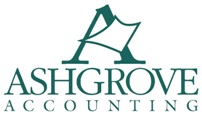Posted by on May 2, 2011
One of the most consistently overlooked financial measures in small business is that of value. Almost every decision you make in business will either create or destroy value. Compare this idea to a house. When you consider purchasing a house, you examine the property condition, likeability of the neighborhood, price, quality of the construction, etc. Based on this information, you’ll make a subjective judgment of the value. After the purchase, you might refinance, replace the carpeting, put an addition on, all of which will continue to affect the value, either positively or negatively.
The same is true in business. Do you buy the truck or lease it? Should you pursue the new product/service line, or invest in your current business? Pay with equity or take on debt? Each little (and big) decision over the course of years in business will take you down a path which continues to affect the value. Who knows where you might end up? Could be in two distinctly different places depending on how good the decisions (and accounting records) behind them are.
Some day you’ll want to sell the business and hopefully, if you’ve made the right decisions, it’ll be worth something. The point is, you have a potentially valuable asset. Receiving a paycheck and having cash in the bank are great, but don’t ignore the value of your business.

